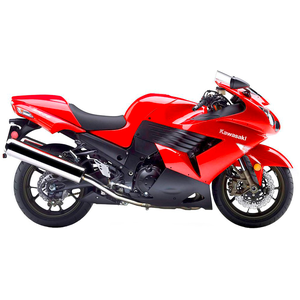Kawasaki ZZR 1400 / Ninja ZX-14 (2006-2007): The Gentle Giant of Hyperbikes
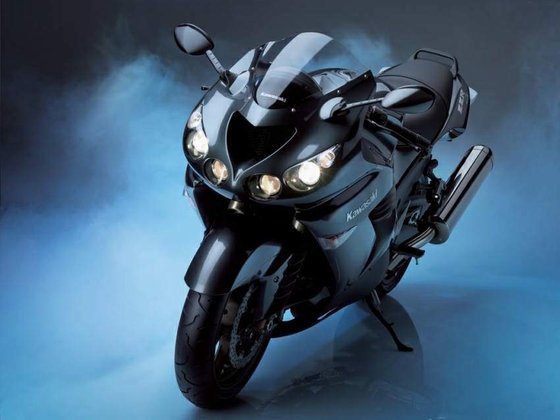
Introduction: The Rebirth of a Legend
When Kawasaki unleashed the ZZR 1400 (known as the Ninja ZX-14 in North America) in 2006, it wasn’t just launching a motorcycle—it was reigniting a legacy. Positioned as the spiritual successor to the iconic ZZR1100 and ZZR1200, this bike arrived with a clear mission: dominate the hyperbike segment with a blend of nuclear-grade power, touring comfort, and engineering finesse. Two decades later, riding a well-maintained example feels like taming a thunderstorm—terrifying, exhilarating, and oddly civilized all at once.
What makes the 2006-2007 generation fascinating isn’t just its headline-grabbing 197 HP (with ram air) or its 188 mph (303 km/h) top speed. It’s how Kawasaki packaged this fury into a machine that could plausibly serve as a daily rider. Let’s dissect why this two-wheeled ICBM remains a benchmark for power addicts with a practical streak.
Design & Aesthetics: Form Follows Fury
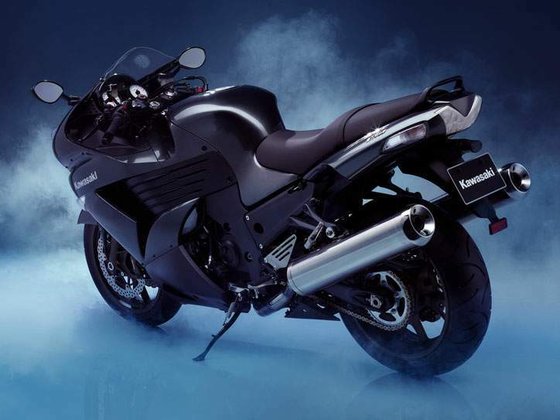
The ZZR 1400’s design is equal parts function and theater. Its 85.4-inch (2,170 mm) length and quad-projector headlights give it the presence of a stealth bomber, while the monocoque aluminum frame—arching over the engine like a metallic spine—keeps the profile sleek. Unlike the exposed trellis frames of its rivals, this design choice allows body panels to flow uninterrupted, creating wind-tunnel efficiency that still looks fresh today.
Color options like Candy Thunder Blue and Passion Red pop under sunlight, but it’s the details that age gracefully:
- Integrated turn signals flush with the fairing
- LED taillight with a signature “V” motif
- Dual analog gauges paired with an LCD screen (a rarity in pre-2010s bikes)
The cockpit feels surprisingly intimate for a bike weighing 566 lbs (257 kg) wet. A 31.5-inch (800 mm) seat height and narrow tank let even shorter riders plant both feet—a small mercy when you’re straddling this much metal.
Performance: Controlled Detonation
The Engine: A Symphony of Excess
At its heart lies the 1,352cc inline-four, a masterpiece of controlled chaos. Key numbers tell part of the story:
- 197 HP @ 9,500 RPM (ram air-assisted)
- 113.5 lb-ft (153.9 Nm) of torque @ 7,500 RPM
- 0-60 mph (0-100 km/h) in 2.9 seconds
But raw stats don’t capture the experience. Thumb the starter, and the engine awakens with a muted growl—deceptively docile until you twist the throttle. Below 4,000 RPM, it pulls like a freight train; past 6,000 RPM, the ram air kicks in, and the horizon starts rushing at you like a time-lapse video. Yet the power delivery is eerily linear, thanks to Mikuni 44mm throttle bodies and a dual-balancer shaft system that neuters vibrations.
Handling: The Illusion of Lightness
Kawasaki’s monocoque frame isn’t just for show. By mounting the engine as a stressed member, they achieved a 57.5-inch (1,461 mm) wheelbase that balances stability and agility. The setup shines on sweeping bends, where the ZZR leans with unexpected neutrality. However, tight corners demand respect—this is still a 560+ lb bike, and its 23-degree rake reminds you to plan entries early.
Suspension highlights:
- 43mm inverted forks with 18-way compression damping
- Uni-Trak rear shock adjustable for preload and rebound
- 4.6 inches (116.8 mm) front / 4.8 inches (121.9 mm) rear travel
Braking is handled by radial-mount 310mm front discs with 4-piston calipers—adequate for street use but prone to fade during track abuse. The rear 250mm disc is best reserved for speed regulation, not emergencies.
Comfort & Daily Usability
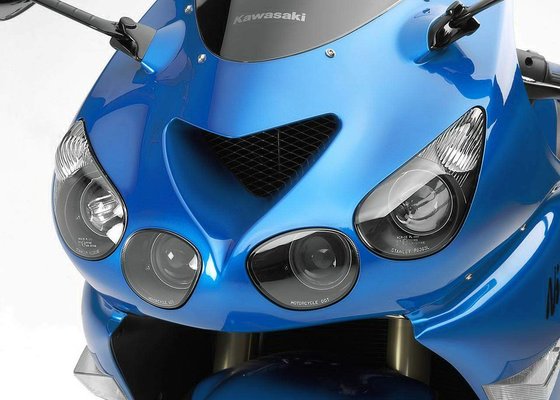
For a hyperbike, the ZZR 1400 is shockingly livable:
- Ergonomics: The bars are 2.5 inches closer to the rider than the ZX-12R, creating a relaxed posture. Think sport-tourer, not racer.
- Wind protection: The fairing deflects air cleanly over the rider’s helmet, making 100+ mph (160 km/h) cruising feasible without a windscreen upgrade.
- Fuel efficiency: Expect 30-35 mpg (7.8-6.7 L/100km) if ridden sanely, thanks to DFI fuel injection. The 5.8-gallon (22 L) tank grants 180+ mile (290 km) range.
Vibration is virtually absent below 7,000 RPM, and the seat—while firm—doesn’t punish spines on long hauls. It’s a bike that rewards riders who appreciate duality: docile commuter by day, apex predator by weekend.
Competition: How the ZZR Stacks Up
The 2006-2007 hyperbike arena was a clash of titans. Here’s how the ZZR 1400 fared:
| Model | Power | Torque | Weight (wet) | Top Speed | Key Difference vs. ZZR 1400 |
|----------------------|-------------|--------------|--------------|----------------|---------------------------------------|
| Suzuki Hayabusa | 175 HP | 102 lb-ft | 485 lbs | 186 mph | More aerodynamic, softer suspension |
| Honda CBR1100XX | 152 HP | 86 lb-ft | 540 lbs | 175 mph | Smoother engine, dated tech |
| Yamaha FJR1300 | 145 HP | 99 lb-ft | 641 lbs | 155 mph | Touring focus, shaft drive |
Hayabusa (GSX1300R): The ZZR’s arch-nemesis. While the ‘Busa had better aero and a cult following, the Kawasaki countered with 22 more horsepower and a roomier riding position. However, Suzuki’s SDTV carburetors offered marginally better midrange response.
Honda CBR1100XX Super Blackbird: A gentleman’s express. The Honda’s silky inline-four and build quality were superior, but its 1997-era chassis and lack of ram air left it outgunned.
Verdict: The ZZR 1400 dominated in brute force and tech (digital ignition, monocoque frame), while the Hayabusa appealed to purists. Neither has aged poorly, but Kawasaki’s offering feels more modern in 2023.
Maintenance: Keeping the Beast Alive
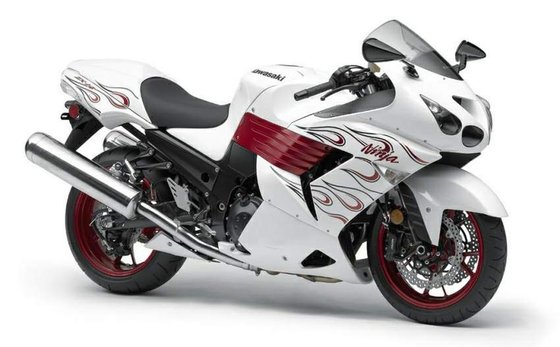
Owning a 2006-2007 ZZR 1400 isn’t just about riding—it’s about stewardship. Here’s what to prioritize:
Critical Service Points
- Valve Adjustments: Every 15,000 miles (24,000 km). Shim-under-bucket design requires patience. Clearances:
- Intake: 0.15-0.20 mm (0.006-0.008 in)
-
Exhaust: 0.22-0.27 mm (0.009-0.011 in)
-
Cooling System: Flush every 2 years. Capacity: 3.4 liters (3.6 quarts). Use ethylene glycol-based coolant.
-
Chain & Sprockets: Stock gearing is 17T/41T. Upgrade to a DID 525ZVX3 chain (116 links) for longevity.
-
Brake Fluid: Replace annually with DOT 4. Bleed thoroughly—air bubbles love the ABS module’s labyrinthine lines.
Common Upgrades
- Exhaust: The stock mufflers weigh 28 lbs (12.7 kg). A full titanium system (e.g., Akrapovič) sheds 18 lbs and unlocks 5-7 HP.
- Suspension: Öhlins STX46 rear shock improves damping for aggressive riding.
- Tires: Swap to Michelin Road 6 GT for all-weather grip or Bridgestone Battlax S22 for track days.
MOTOPARTS.store Recommendations
- Air Filters: K&N KA-1402 (reusable, boosts airflow)
- Brake Pads: EBC HH Sintered (FA408/FA409) for bite without squeal
- Oil: Motul 7100 10W-40 (4.1 liters with filter change)
Conclusion: The Hyperbike That Refuses to Retire
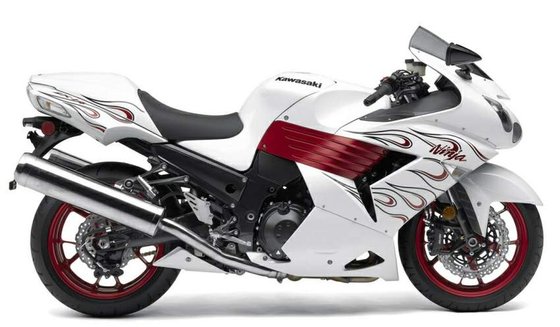
The 2006-2007 Kawasaki ZZR 1400 isn’t just a relic of the horsepower wars—it’s a testament to engineering that balances savagery with sanity. While modern bikes boast traction control and ride modes, this Kawasaki reminds us that raw mechanical mastery still thrills. Whether you’re chasing horizons or dominating straights, it remains a king that never truly abdicated its throne.
For owners, MOTOPARTS.store stands ready to keep your ZZR immortal. From performance upgrades to OEM-spec maintenance kits, we’ve got the DNA to make this legend ride like 2006 never ended.



Specifications sheet
| Engine | |
|---|---|
| Stroke: | Four-stroke |
| Ignition: | TCBI with Digital Advance |
| Max power: | 139 kW | 186.0 hp |
| Max torque: | 136 Nm |
| Fuel system: | DFI® with four 44mm Mikuni throttle bodies |
| Lubrication: | Wet sump |
| Max power @: | 9500 rpm |
| Displacement: | 1352 ccm |
| Max torque @: | 7500 rpm |
| Bore x stroke: | 84.0 x 61.0 mm |
| Configuration: | Inline |
| Cooling system: | Liquid |
| Compression ratio: | 12.0:1 |
| Number of cylinders: | 4 |
| Valves per cylinder: | 4 |
| Dimensions | |
|---|---|
| Wheelbase: | 1461 mm (57.5 in) |
| Dry weight: | 220 |
| Wet weight: | 257 |
| Seat height: | 800 mm (31.5 in) |
| Overall width: | 760 mm (29.9 in) |
| Overall height: | 1180 mm (46.5 in) |
| Overall length: | 2170 mm (85.4 in) |
| Ground clearance: | 125 mm (4.9 in) |
| Fuel tank capacity: | 22 L (5.8 US gal) |
| Drivetrain | |
|---|---|
| Clutch: | Wet, multiple discs, hydraulic operated |
| Final drive: | chain |
| Gear ratios: | {'1st': '2.611 (47/18)', '2nd': '1.947 (37/19)', '3rd': '1.545 (34/22)', '4th': '1.333 (32/24)', '5th': '1.154 (30/26)', '6th': '1.036 (29/28)'} |
| Chain length: | 116 |
| Transmission: | 6-speed |
| Rear sprocket: | 41 |
| Front sprocket: | 17 |
| Maintenance | |
|---|---|
| Rear tire: | 190/50 z-17 |
| Engine oil: | 10W40 |
| Front tire: | 120/70 z-17 |
| Brake fluid: | DOT 4 |
| Spark plugs: | NGK CR9EIA-9 |
| Spark plug gap: | 0.9 |
| Coolant capacity: | 3.4 |
| Engine oil capacity: | 4.1 |
| Engine oil change interval: | Every 5000 km or 2 years |
| Valve clearance (intake, cold): | 0.15–0.20 mm |
| Valve clearance check interval: | 24,000 km / 15,000 mi |
| Valve clearance (exhaust, cold): | 0.22–0.27 mm |
| Recommended tire pressure (rear): | 2.9 bar (42 psi) |
| Recommended tire pressure (front): | 2.9 bar (42 psi) |
| Performance | |
|---|---|
| Top speed: | 303.6 km/h (188.7 mph) |
| 0-100 km/h: | 2.9 sec |
| 0-200 km/h: | 7.8 sec |
| Standing ¼ mile: | 10.3 sec |
| Chassis and Suspension | |
|---|---|
| Rake: | 23° |
| Frame: | Aluminum monocoque |
| Trail: | 94 mm (3.7 in) |
| Rear tire: | 190/50 z-17 |
| Front tire: | 120/70 z-17 |
| Rear brakes: | Single 250 mm disc, 2-piston caliper |
| Front brakes: | Dual 310 mm petal discs, radial-mounted 4-piston calipers |
| Rear suspension: | Bottom-Link Uni-Trak® with gas-charged shock, adjustable preload, rebound, compression damping, and ride height |
| Front suspension: | 43mm inverted cartridge fork, adjustable preload, 18-way compression, 15-way rebound damping |
| Rear wheel travel: | 121.9 mm (4.8 in) |
| Front wheel travel: | 116.8 mm (4.6 in) |



